On this page
Books about SwiftsThe books are listed in order of publication date with the most recent at the top.
For more books about seabird in general see the;
Seabirds page
Swifts
Family: Apodidae
Regular UK terns
Common Swift
Apus apus
Occasional visitors
Little Swift
Apus affinis
Alpine Swift
Apus melba
Pacific Swift
Apus pacificus
Pallid Swift
Apus pallidus
Chimney Swift
Chaetura pelagica
White-throated Needletail
Hirundapus caudacutus
Worldwide
There are approximately 100 species in the Apodidae family worldwide. These are swifts, swiftlets, spinetails and needletails. These are closely related to the treeswifts of the family Hemiprocnidae. There are 4 species of treeswift.
|
|
|
|
Swift Summers: My Life with the Common SwiftMark Walker
2016
"The Common Swift is an aerial specialist rarely coming to the ground. This means they have been little studied. This book relates the author's time spent studying these special birds between 2006-2011 at a nesting colony where he had unique access. The author has tried to convey information about swifts in a more personal and interesting style than is the case in scientific texts."
|
Buy from amazon.co.uk 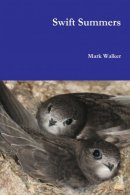
|
|
Swiftlets of Borneo: Builders of Edible NestsLim Chan Koon and Earl Of Cranbroom
Natural History Publications (Borneo)
2nd edition
2014
"Since the close of the 16th century AD, the edible nests of swiftlets have aroused the perplexed curiosity of European travellers to South-east Asia, while at the same time providing one of the most important constituents of traditional Chinese medicine. For both cultures — western and eastern — this book clarifies the nature of these nests, the troglodytic lives of the birds that build them, and the exploitation of this highly valuable natural resource. Successively, and together, the two authors have studied these matters for 55 years, from Sarawak through the length and breadth of Borneo and beyond. Borneo is now the world’s most important source of wild edible nests. These are built by four species of swiftlets, three of which echolocate while the fourth does not. This significant difference is reflected in details of the birds’ breeding cycles, elucidated in full for the first time in these pages. With this clear understanding, it is at last possible to recommend procedures, now proven by the lead author’s work to be effective, for the sustainable management of this unique wildlife resource. There is, at last, real hope for successful programmes of sustainable management. The advice is contained within these pages!."
|
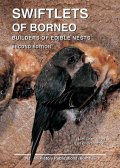 |
|
SwiftsJ. Glenday, R. Summerton, A. Lolley and D. Ramsay
Salty Press
2010
An 24 page anthology of poetry and prose inspired by Swifts together with a brief life history of the Common Swift.
|
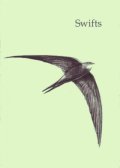 |
|
Chimney Swifts: America's Mysterious Birds above the FireplacePaul & Georgean Kyle
Louise Lindsey Merrick Natural Environment Series
Texas A&M University Press
2005
"From the curious sounds of baby swifts chattering in the chimney to the awe-inspiring sight of birds entering their roost at dusk, like smoke swirling back into the flue, Chimney Swifts have captured the imagination of many generations of North Americans. These sleek birds with crescent-shaped wings and acrobatic flight patterns migrate to North America from the Amazon River Basin each spring to breed and raise their young. But by the late 1980s, changes in chimney construction and homeowner attitudes had contributed to a major decline in the numbers of Chimney Swifts. Authors Paul and Georgean Kyle have worked ceaselessly in an attempt to alter that trend. The Kyles' eight-acre homestead has become a world-renowned Chimney Swift sanctuary and research station, with more than a dozen Chimney Swift towers of various designs located throughout their property. The swifts return each spring to many of these towers, where they rear their young and where their home life is observed and recorded in previously undocumented detail. In Chimney Swifts, the Kyles share the knowledge they have gained, providing readers with an unprecedented peek into the secret life of these beneficial, insect-eating birds. With a non-technical narrative, numerous photos, and original drawings, they explore Chimney Swift natural history and provide practical guidelines for homeowners to coexist peacefully with these remarkable spring and summer guests."
|
Buy from amazon.co.uk 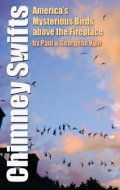
|
|
Chimney Swift TowersPaul & Georgean Kyle
Louise Lindsey Merrick Natural Environment Series #38
Texas A&M University Press
2005
"Chimney Swifts, birds that nest and roost in chimneys, have been historically abundant in North America. But by the late 1980s, the number of swifts migrating to North America from the Amazon River Basin had declined. A growing number of people across North America are now constructing nesting towers and conducting Chimney Swift conservation projects in their own communities. With Chimney Swift Towers, concerned bird conservationists have a step-by-step guide to help them create more habitat for these beneficial, insect-eating birds. Chimney Swift experts Paul and Georgean Kyle give directions for building freestanding wooden towers, wooden kiosk towers, masonry towers, and other structures. Included are: design basics; lists of materials needed; useful diagrams and photographs; and detailed instructions on site preparation, tower construction, installation, and maintenance; Anyone with basic woodworking or masonry skills and an interest in wildlife conservation will find this publication helpful."
|
Buy from amazon.co.uk 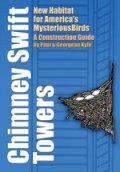
|
|
The Museum SwiftsAndrew Lack and Roy Overall
Photographs: Derek Bromhall, Clive Bromhall
Oxford University Museum of Natural History
2002
Swifts have nested in the tower of the Oxford University Museum of Natural History for many years. David Lack started a research programme in 1947 to study the swifts nesting in the tower. He published an account of this work, Swifts in a Tower, 1956. The Museum Swifts is a revised and updated edition of this original publication by Andrew Lack, the son of David Lack, and Roy Overall who has monitored the Museum swifts since 1962.
|
Buy from amazon.co.uk 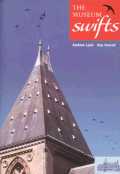
|
|
Swiftlets of Borneo: Builders of Edible NestsLim Chan Koon and Earl Of Cranbroom
Natural History Publications (Borneo)
2002
"The first book to clearly study the complicated ecology of these birds. With chapters on exploitation, conservation, and birds'-nest cave management. Since the close of the 16th century AD, the edible nests of swiftlets have roused the perplexed curiosity of European travellers to South-east Asia, while at the same time providing one of the most important constituents of traditional Chinese medicine. For both cultures-western and eastern-this book clarifies the nature of these nests, the troglodytic lives of the birds that build them, and the exploitation of this highly valuable natural resource. Borneo is now the world's most important source of wild edible nests. These are built by three species of swiftlets. Regional differences in management of swiftlets in the various limestone caves of Borneo are reviewed. The authors also describe the emergence of swiftlet house-farming, which they see as inevitable. For many readers this section of the book will be of great interest, outlining the hope of an amalgam between a prosperous domestic industry and sustainable management of wild populations."
|
Buy from amazon.co.uk 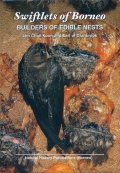
|
|
Swifts: A Guide to the Swift and Treeswifts of the WorldPhil ChantlerIllustrations: Gerald Driessens
Pica
Second edition
2000
"This work collates late-1990s research findings from the field of ornithology to provide a thoroughly modern overview of swift identification and distribution. This edition has revised artwork and maps, and much new textual material."
|
Buy from amazon.co.uk 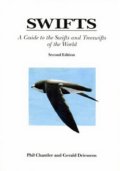
|
|
Swifts: A Guide to the Swift and Treeswifts of the WorldPhil ChantlerIllustrations: Gerald Driessens
Yale University Press
Second edition
2000
"The second edition of this highly acclaimed book has been extensively revised by the author to take account of recent information, most particularly about the neotropical swifts, and several plates have been revised by the artist.
|
Buy from amazon.co.uk 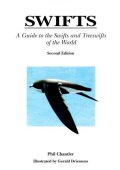
|
|
Swifts: A Guide to the Swift and Treeswifts of the WorldPhil ChantlerIllustrations: Gerald Driessens
Pica
1995
"As well as presenting the author's original research, this book also brings together a review of all current research into the identification and distribution of 96 species of swift worldwide."
|
Buy from amazon.co.uk 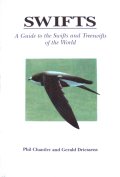
|
|
On the Biology of Five Species of Swifts (Apodidae, Cypseloidinae) in Costa RicaManuel A. Marin, Gary F. Stiles
Proceedings Volume 4, Number 4
Western Foundation of Vertebrate Zoology
1992
A 66 page study of the White-collared (Streptoprocne zonaris), White-chinned (Cypseloides cryptus), Spot-fronted (Cypseloides cherriei), Chestnut-collared Cypseloides rutilus), and Black Swift (Cypseloides niger).
|
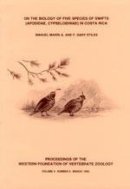 |
|
Chimney Swifts and Their RelativesMargaret Whittemore
Nature Books Publishers
1981
|
Buy from amazon.co.uk 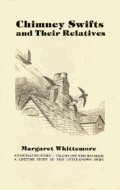
|
|
Devil Birds: The Life Of The SwiftDerek Bromhall
Hutchinson
1980
|
Buy from amazon.co.uk 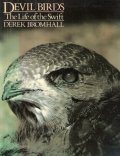
|
|
Bird Study, Volume 5, Issue 31958
Main articles:
- The Census of Heronries 1957 - J. Stafford
- Swifts over the Sea at Night - David Lack
- Weather Movements of Swifts 1955–1957 - David Lack
|
|
|
The Breeding Biology of the Chimney Swift: Chaetura pelagicaR.B. Fischer
New York State Museum Bulletin, Vol 368
The University of the State of New York
1958
|
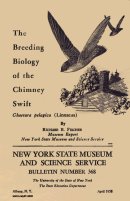
|
|
Swifts In A TowerDavid Lack
Methuen
1956
Early study of Swifts based on a colony nesting in the tower of the Oxford University Museum of Natural History.
|
Buy from amazon.co.uk 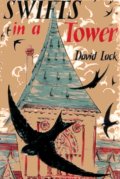
First edition
Buy from amazon.co.uk
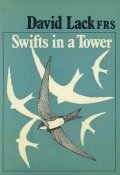
1976 reprint
|
|
Bird Study, Volume 2, Issue 11955
Main articles:
- The Breeding of Blackbird, Song Thrush and Mistle Thrush in Great Britain Part I. Breeding Seasons - M. T. Myers
- The Breeding Distribution and Habitats of the Pied Flycatcher (Muscicapa Hypoleuca) in Britain - Bruce Campbell
- The Summer Movements of Swifts in England - David Lack
- Abrasion and Loss of Rings among Sea-Birds - J. C. Coulson & E. White
|
|
|